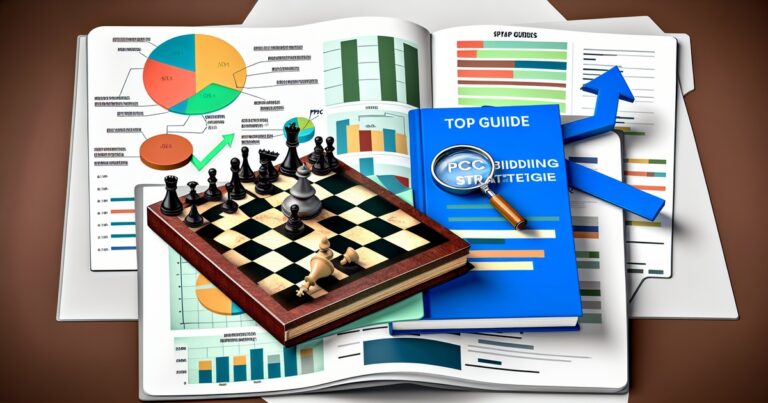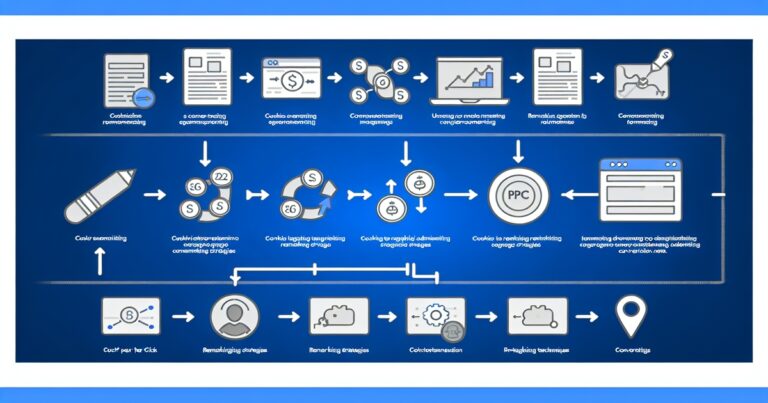Design research is a crucial step in the product development process. It allows designers and developers to gather insights into user needs, preferences, and pain points to effectively create products that meet those needs. Without design research, products may miss the mark and fail in the marketplace.
The Importance of Design Research in Creating Successful Products
Design research is essential for creating successful products because it helps teams understand their users, their needs, and how they interact with products. Teams can create solutions that meet real-world needs by gathering information about user behaviours, preferences, experiences, and pain points. Without design research, developers would be forced to rely on assumptions about users’ needs and behaviours.
In today’s competitive business landscape, where consumers can access endless options at their fingertips, companies cannot afford to produce mediocre or ineffective products. One wrong move could lead them to lose their market share or go out of business entirely.
Design research helps businesses stay ahead of the curve by providing concrete insights into product performance before launch. By conducting effective design research before introducing a product in the market, companies can respond proactively to consumer feedback instead of being reactive when things go south.
An Overview of the Design Research Process
The design research process systematically involves identifying problems or opportunities related to a target audience or market segment. The following are the steps involved:
- Defining the Research Problem: this is all about identifying what problem your team aims to solve by conducting this study.
- Conducting User Interviews: you’ll need to talk directly with your ideal customers or end-users so you can gain valuable insights about how they think, feel and behave.
- Gathering Secondary Research: conducting secondary research, i.e., researching existing studies and analyzing industry trends, can provide valuable insights about markets, competitors, or target audiences.
- Creating Personas and User Scenarios: A persona represents a fictional character representing a group of end-users with similar needs. A user scenario explains how the user interacts with a product, and both are crucial for designing effective solutions for target audiences.
- Conducting Usability Testing: usability testing is all about observing how people interact with your product before launch to identify areas that require improvement
- Synthesizing Findings and Iterating Designs: Synthesizing insights gathered from research can help your team identify patterns or areas where you need to improve your product. The last step involves using those findings as feedback to iterate designs effectively.
The next few sections will dive into each of these steps in more detail so that you can confidently conduct effective design research for your next project.
Defining the Research Problem
Identifying the Problem to Solve
The first and most crucial step in conducting effective design research is identifying the problem you want to solve. This means you need to clearly understand what your product aims to achieve and what problems it intends to solve for users.
Start by defining your research objectives, and specific goals your research should achieve. Once you’ve identified your objectives, you can start brainstorming questions that will help you understand how users interact with similar products and their current pain points.
Understanding User Needs and Pain Points
To design a successful product, it’s essential to understand your target audience’s needs and pain points. You can’t design something that solves user problems if you don’t understand those problems in the first place. Conduct user interviews or surveys, which can provide valuable insights into what users want from a product and their expectations and frustrations with similar products on the market.
Collect feedback on both positive and negative experiences with these products to identify areas for improvement or innovation. By putting yourself in the shoes of potential users, you’ll be better equipped to create a product that meets their needs while addressing any issues they may face.
Conducting User Interviews
Preparing for interviews
When it comes to conducting effective user interviews, preparation is key. Before you start interviewing users, you need to identify the goals and objectives of your research. You also need to determine who your target audience is and how you will recruit participants.
Ensure you clearly understand the problem you’re trying to solve and what information you hope to gather from your interviews. Once you have a plan in place, make sure that all the logistics are taken care of, such as scheduling participants, setting up the interview space with all the necessary equipment, and ensuring that everyone involved knows their role in conducting the interview.
Asking open-ended questions
Asking open-ended questions during user interviews is crucial in gathering valuable insights as it allows users to provide detailed answers without feeling restricted by closed-ended questions. Open-ended questions start with phrases like “tell me about” or “describe for me” rather than “yes” or “no.” It’s important not to influence users’ answers with leading questions since it could skew results. Be conscious of your tone during questioning and ensure that your body language does not betray any confirmation bias so users can speak freely.
Analyzing interview data
After conducting user interviews, it’s time to analyze the data gathered through note-taking or recorded audio/video footage. First, listen/watch/read through each interview several times and take notes on themes emerging from users’ responses. Then look for patterns across multiple interviews: are common themes emerging?
What are some contrasting experiences among interviewees? Use these data points to determine what works or doesn’t work with a product/service design, product features or marketing campaign.
Conducting effective user interviews requires careful preparation beforehand as well asking open-ended question during sessions and a thorough analysis of data after. These techniques will help you ensure that you collect valuable insights that will inform your design process to create better products for your customers.
Gathering Secondary Research
Design research involves gathering data firsthand and looking for existing research and studies that can inform your design decisions. This secondary research can be valuable in understanding industry trends and best practices.
Reviewing Existing Research and Studies
The first step in gathering secondary research is reviewing existing studies on your product or service. This can include academic papers, industry reports, case studies, and market analyses.
By reviewing this information, you can gain insights into what has worked for others in your field and what has not. It’s important to assess the quality of the research you are reviewing critically.
While some sources may be useful, others may be outdated or biased toward a particular perspective. Be sure to evaluate the credibility of each source carefully.
Analyzing Industry Trends
In addition to reviewing existing research, it’s essential to stay up-to-date with industry trends that impact your users’ needs and behaviours. This can involve analyzing market reports on new products or services, attending conferences or webinars focused on your industry, or staying up-to-date with emerging technologies likely to affect user behaviour.
By keeping an eye on industry trends as you conduct design research, you’ll be better able to anticipate new challenges and opportunities for innovation. Whether it’s a shift towards new forms of media consumption or changes in consumer attitudes towards privacy and security online, staying informed is key when designing successful products.
Creating Personas and User Scenarios
Design research alone cannot guarantee the success of a product. That’s why creating personas and user scenarios is equally important. It helps designers understand their target audience better and visualize their needs and pain points.
Developing personas based on user research
A persona is a fictional representation of a typical user based on empirical data collected during the research phase. It’s easier to relate to an archetype representing your target audience than to raw data. Personas help designers empathize with users, create products that meet their needs, and avoid designing for themselves.
To develop personas, analyze the data collected from interviews, surveys, and other sources. Look for patterns in demographic information, behaviour patterns, goals, motivations, pain points, etc. Then use that information to create fictional characters: give them names, ages, occupations, hobbies – anything that makes them feel like real people.
Writing user scenarios to understand how users interact with products
User scenarios describe how users interact with products in specific situations or contexts. They help designers understand how users think and behave when using products and identify areas where they might struggle or get frustrated.
To create user scenarios:
- Identify the context: what is the user trying to achieve?
- Describe the scenario: what happens before/during/after using the product?
- List possible actions: what could go wrong? What could be improved?
The more detailed your scenarios are, the better you’ll be able to anticipate potential problems and design effective solutions.
Conducting Usability Testing
Usability testing is essential to design research that helps designers understand how users interact with their products. It involves setting up a controlled environment where users can test the product while being observed and recorded. This section will discuss how to set up usability tests and what to observe during testing.
Setting up Usability Tests
To set up a usability test, first, identify the tasks you want participants to complete on your product. Then, create a scenario for each task explaining the use of context and participants’ actions.
Next, recruit participants who fit your target user persona and schedule a time for them to come in. During the test, provide instructions for each scenario and ask participants to think aloud as they complete the task.
Record their screens and audio to capture their actions and verbalizations. After the test, ask participants for feedback about their experience.
Observing and Recording User Behavior during Testing
During usability testing, it’s important to observe and record user behaviour as they interact with your product. Look for patterns in behaviour that indicate confusion or frustration with certain features or tasks. Take note of any errors that occur during testing or issues with navigation.
In addition to observing behaviour, also pay attention to verbalizations from participants. Their comments can explain why they are having difficulty completing certain tasks or using specific features.
Overall, conducting effective usability tests requires careful planning and observation skills. By understanding how users interact with your product through testing, you can make informed design decisions that improve their experience.
Synthesizing Findings and Iterating Designs
Analyzing data from all sources
Now that you have conducted user interviews gathered secondary research, created personas and user scenarios, and conducted usability testing, it’s time to analyze all the collected data. This is perhaps the most crucial part of design research because it helps you identify patterns in your data and gain insights into user needs. By analyzing your data from all sources, you can paint a clear picture of what users want and need in a product.
Identifying patterns and insights
During the synthesis phase, looking for patterns in your data is important. Patterns can reveal key insights about user behaviour, preferences, and pain points.
For example, if several users mentioned having difficulty navigating a certain area of your app during usability testing or interviews, this area likely needs improvement. Synthesizing findings also means looking for outliers or exceptions that may not fit neatly into existing patterns.
Using findings to iterate designs
Using your synthesized findings, you can make informed decisions about iterating on designs based on user feedback. By iterating designs based on what you learned during the research process, you can create products that better meet users’ needs.
Iteration should be an ongoing process throughout design development – integrating what was learned through the synthesis phase will help ensure that improvements are made iteratively rather than only as one-off fixes. The synthesis phase is crucial for creating successful products – so don’t overlook it!
Conclusion
The importance of design research in creating successful products
In today’s competitive market, it’s essential to create products that meet the needs of your target audience. Design research helps you understand user needs and pain points, so you can build products that solve real problems.
Without design research, you’re guessing what your users want and need. By investing the time and resources to conduct effective design research, you can create successful products that resonate with your target audience.
Final thoughts on conducting effective design research
Effective design research requires careful planning, attention to detail, and an understanding of user needs. It’s important to approach each process step with an open mind and a willingness to listen to user feedback.
Remember to take time to analyze all data collected throughout the process and identify patterns and insights to iterate designs. By following these steps effectively, your final product will be much closer aligned with your user’s needs and will be able to differentiate itself from competitors!









